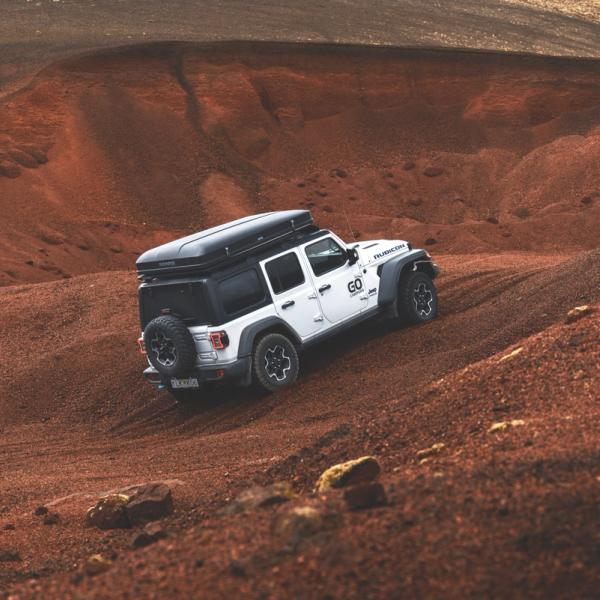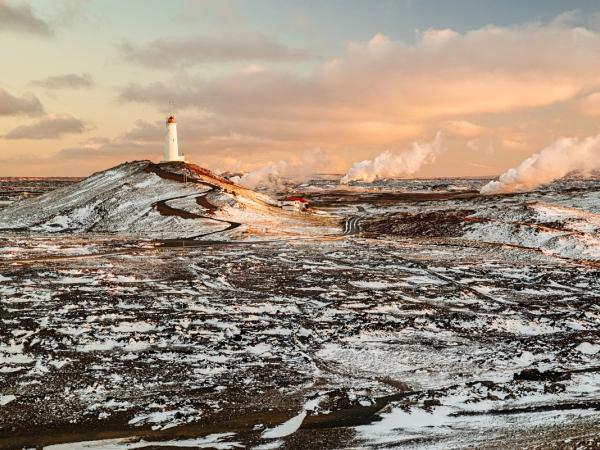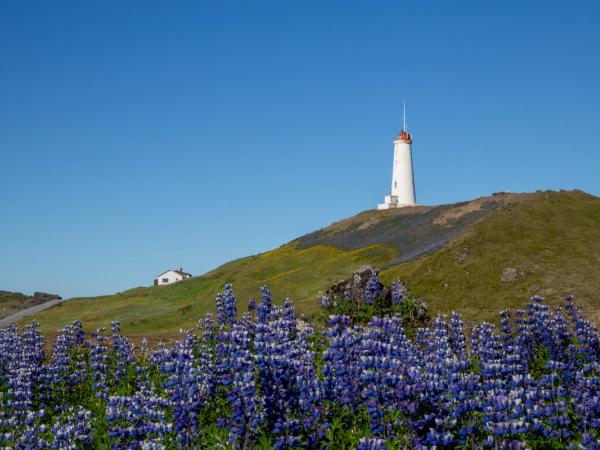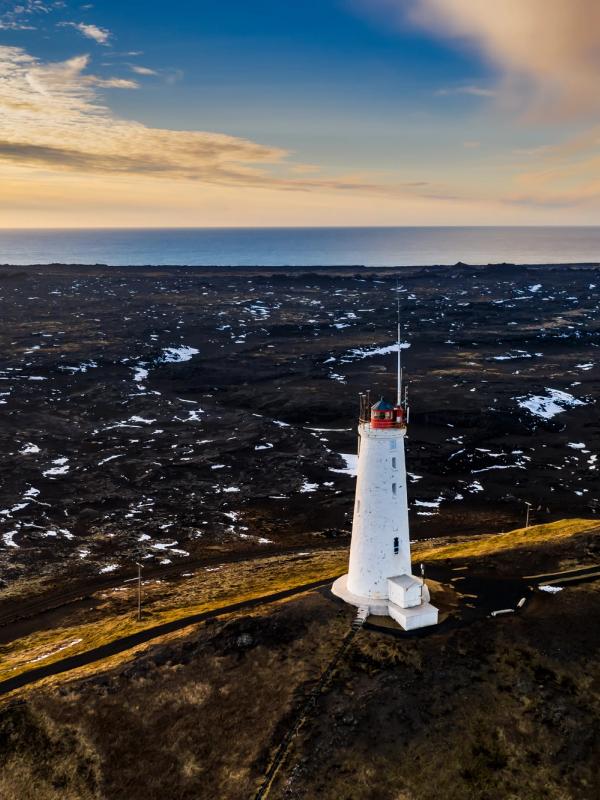
Reykjanesviti Lighthouse: Your Guide to Iceland's Oldest Lighthouse
Picture this: You're standing on the edge of Iceland, where two tectonic plates meet, with nothing but the wild North Atlantic stretching before you. That's what you'll find at Reykjanesviti Lighthouse, sitting on the Reykjanes Peninsula's rugged coastline.
This isn't just any lighthouse, it's Iceland's oldest. It has a story as dramatic as the landscape around it. Earthquakes destroyed it once. Rebuilds followed. Keepers lived here in total isolation for decades. Through it all, Reykjanesviti kept guiding ships safely through some of the world's toughest waters.
Key Takeaways
- Iceland's oldest lighthouse, first built in 1878, rebuilt after an 1886 earthquake
- Located on the Mid-Atlantic Ridge where North American and Eurasian plates meet
- Free to visit with great photo opportunities, especially during lupine season (June-July)
- 40 km from Reykjavík, making it perfect for a day trip
- Surrounded by geothermal wonders, volcanic sites, and the famous Blue Lagoon
- Best visited in summer for easier access and longer daylight hours
- Check for volcanic activity updates before visiting due to recent eruptions in the area
What's the Reykjanesviti Lighthouse?
Reykjanesviti isn't your typical postcard lighthouse. It stands 26.7 meters tall with its classic white tower and red roof. But here's what makes it special: it sits on one of the most geologically active spots on Earth. The name literally means "smoke point lighthouse" in Icelandic. Pretty fitting when you consider it's surrounded by steaming geothermal vents and volcanic landscapes.
You can literally stand between two continents here. The nearby Bridge Between Continents marks where the North American and Eurasian tectonic plates pull apart. This is one of the few places on Earth where the Mid-Atlantic Ridge rises above sea level.
The lighthouse still does its job today. Its light flashes twice every 30 seconds, visible from 69-73 meters above sea level, and keeps guiding ships safely to Iceland's shores, just like it has for over a century.
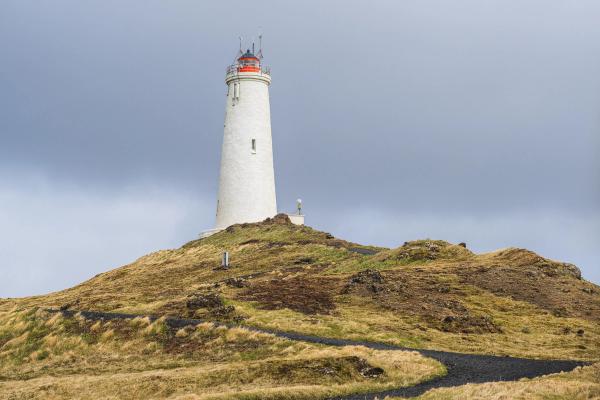
Construction & Interesting Facts
The story of Reykjanesviti shows what happens when humans refuse to give up. The original lighthouse went up in 1878 on Valahnúkur cliff. Eight years later, an earthquake knocked it down. But Icelanders didn't quit.
Frederik Kjorbo, a Danish architect, and Thorvald Krabbe, an engineer, designed the current structure. They built it between 1907 and 1908 on the more stable Bæjarfell hill. The lights finally came on in 1929. Back then, it was one of Iceland's most expensive and advanced structures.
Here are some facts that make Reykjanesviti unique:
- Ghost connection: The nearby Gunnuhver geothermal area gets its name from a ghost. Local folklore says she was trapped there in the 17th century
- Most popular lighthouse: A 2007 survey found it was Iceland's most beloved lighthouse among locals
- Live-in keepers: Until 1999, keepers lived here with their families. They often got cut off for weeks during storms
- Movie star status: The cliff near the lighthouse appeared in Sigur Rós's famous music video "Glósóli"
- Future plans: The lighthouse might need to move due to cliff erosion from earthquakes
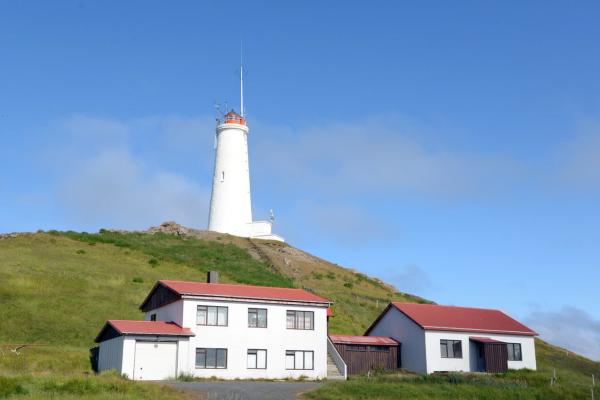
Location & How to Get There
Reykjanesviti sits on Reykjanestá, the southernmost tip of the Reykjanes Peninsula. It's about 40 km southwest of Reykjavík and just 20 km from Keflavík International Airport. Pretty convenient for travelers.
By Car (Your Best Bet)
Renting a campervan (or a car) is your best option. The drive is simple and scenic. Take Route 41 from Reykjavík toward Keflavík, then follow Route 425 toward Grindavík and Reykjanestá. The roads are paved and well-maintained. Signs are in both Icelandic and English.
- From Reykjavík: 45 minutes
- From Keflavík Airport: 20-25 minutes
- Parking: Free parking lot 200-300 meters from the lighthouse
By Guided Tour
No public buses go to the lighthouse. If you don't have a car, guided tours are your best option. Companies like Reykjavik Private Tours and Icelandia offer half-day peninsula tours. They include Reykjanesviti, Gunnuhver hot springs, and often the Blue Lagoon.
Winter Driving Tips
Winter driving needs extra care. Icy roads are common, so renting a 4x4 can be handy. Winds can hit 25 m/s. Check road.is for current conditions. The location is exposed, so the weather changes fast. Pack warm, waterproof clothes.
Best Time to Visit
Visiting Reykjanesviti is always a good idea, but timing your visit correctly can make the experience even better.
Summer (June-August)
Summer gives you the best conditions. Temperatures average 10-15°C. Daylight lasts up to 21 hours in June. The lupine fields bloom in June and July, creating beautiful purple carpets against the black volcanic landscape. All trails stay open during the summer. But summer brings crowds, especially on weekends when Reykjavík residents visit, which is a bit of a downside.
Spring/Fall (April-May, September-October)
These seasons offer fewer crowds and better photos. The weather stays moderate. You'll see autumn colors or spring wildflowers. Fall visitors can catch the Northern Lights from September through October when nights get darker.
Winter (November-March)
Winter visits can be magical but tough. There’s a big chance you might see the Northern Lights and the stormy seas create moody landscapes perfect for photos, but daylight only lasts 4-6 hours. Harsh weather means you need warm, waterproof gear.
Pro tip: Check vedur.is for weather and SafeTravel Iceland for volcanic activity before you go.
Things to Do There
There are plenty of things you can do there. Here are some suggestions:
Photography and Views
Reykjanesviti is perfect for photos. The white tower against black volcanic cliffs and deep blue ocean creates great contrasts. The best shots come during the golden hour in summer, lupine season (June-July), when purple flowers frame the lighthouse, or during storms for dramatic wave crashes. Stay safe and keep your distance from cliffs. Bring a tripod and waterproof gear; Iceland's weather changes fast.
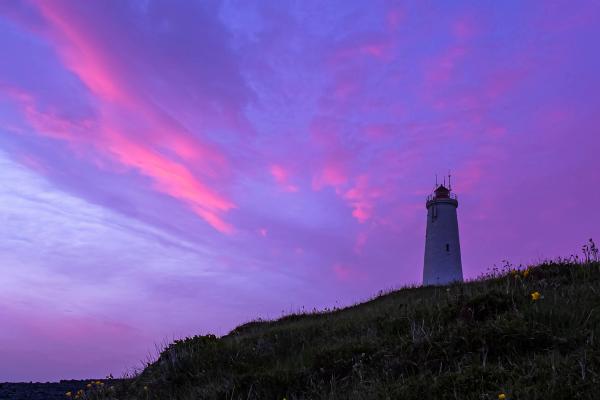
Hiking and Walking
Several trails start from the lighthouse. The Gunnuhver walk goes 1-2 km along an easy boardwalk through steaming geothermal vents. The Great Auk sculpture trail, which honors the extinct bird, is a short 500-meter walk to Todd McGrain's bronze monument. The Valahnúkur cliff area is closed due to earthquake damage. The ground is mostly flat but rocky. Wear good hiking boots.
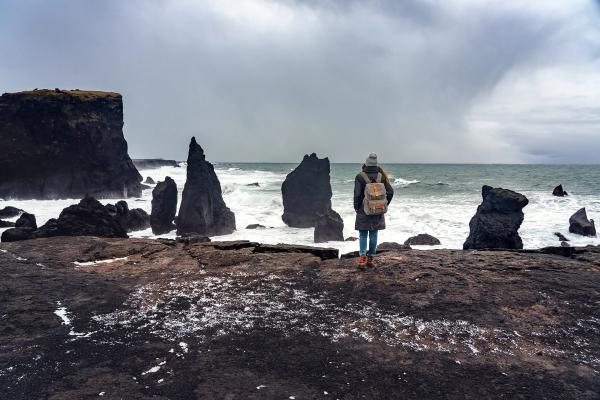
Geothermal Wonders
Just 2 km away, Gunnuhver geothermal area shows Iceland's volcanic power. You'll see bubbling mud pools and steaming vents. Colorful mineral deposits from sulfur create an otherworldly scene. Safe boardwalks let you get close. It's free and open year-round. Perfect addition to your lighthouse visit.
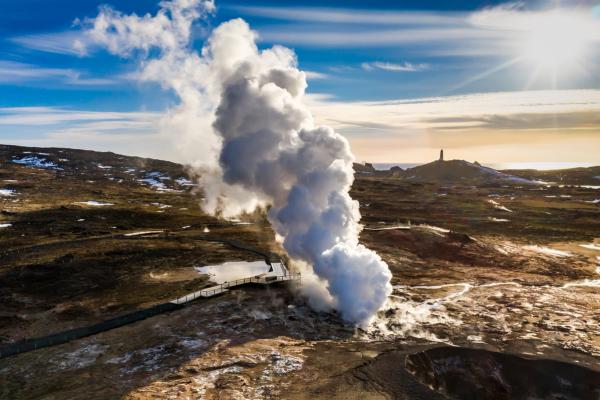
Wildlife Watching
The cliffs come alive with seabirds during summer. Puffins show up from June to July. You'll also see guillemots, kittiwakes, and Arctic terns. Watch out for diving terns during nesting season – they defend their nests! Bring binoculars. Keep your distance so you don't disturb the birds.
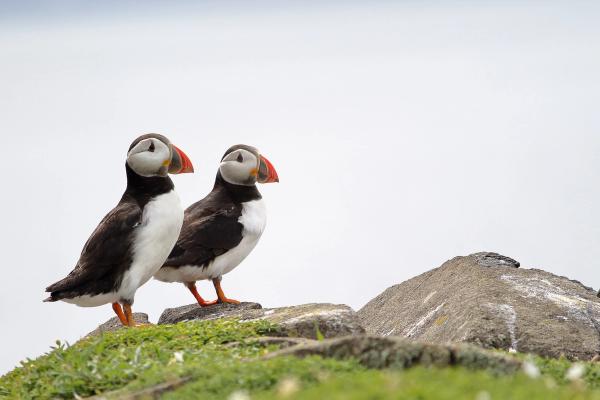
Relaxing and Picnicking
Find a sheltered spot near the parking area for a picnic with amazing views. The wind can be strong, so bring portable chairs and secure everything well. Get supplies at Grindavík's Nettó supermarket (10 km away).
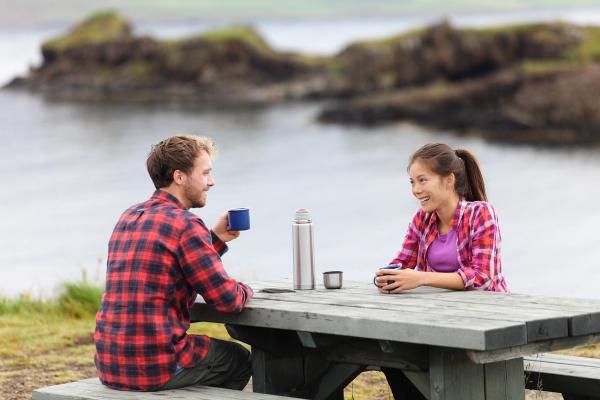
Campsites Nearby
One of the perks of traveling with a campervan is that you can sleep close to nature and visit some of the best spots before the crowds arrive (or have left). Here are some of the best in the area.
Grindavík Campsite (10 km)
This modern campsite is one of the best in the country. It has excellent facilities. It’s currently closed, but it plans to reopen for the summer. When open, you get free hot showers, an indoor kitchen and dining area, electricity and Wi-Fi, and playgrounds for kids. It costs 2,200 ISK per adult.
Important: Volcanic eruptions near Grindavík may close this campsite. Always check before you plan to stay.
Sandgerði Campsite (25 km)
A quieter option near Keflavík Airport with basic amenities that include showers and kitchen. It’s less crowded than Grindavík, and it’s a good option for early flights or late arrivals. It costs around 2000 ISK per adult and opens only between mid-April and September.
Vogar Campsite (30 km)
The most peaceful choice with a scenic coastal setting that’s ideal for tent camping, but also nice for campers. It has limited facilities but beautiful surroundings. Costs around 2,250 ISK per adult.
Camping Tips:
- Book early in summer or arrive before noon
- Get the Camping Card Iceland for discounts
- Check volcanic activity updates
- Wild camping is illegal in Iceland – use designated sites only
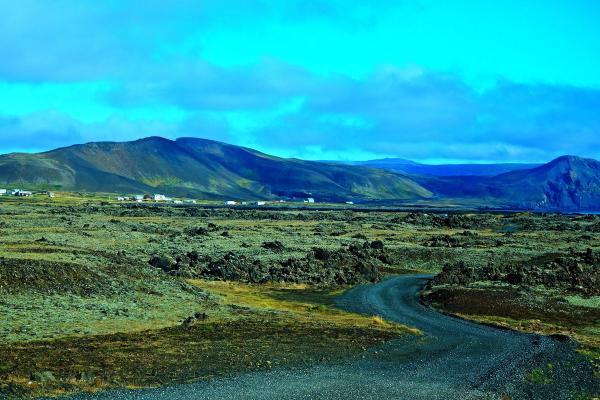
Places to Visit Nearby
The Lighthouse is perfectly located near some cool destinations.
Gunnuhver Geothermal Area (2 km)
Iceland's largest mud pool bubbles just minutes from the lighthouse. Colorful mineral deposits and hissing vents create an alien landscape. Plus, the ghost story about Gunna adds mystery to the visit.
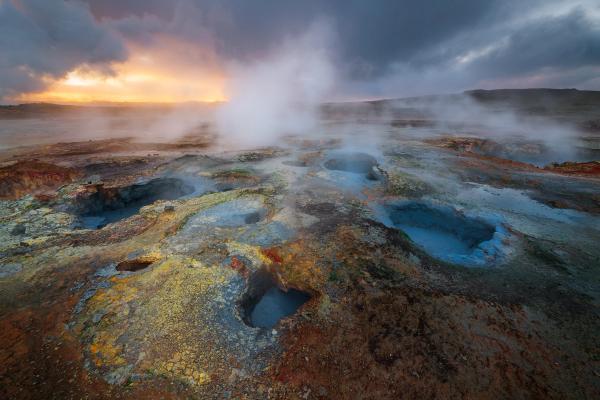
Blue Lagoon (15 km)
Iceland's most famous geothermal spa, perfect for relaxing after exploring volcanic sites. The milky-blue waters are rich in silica and minerals, which are supposed to be great for your skin. It’s very popular, so I recommend that you book online well ahead. Prices start at 9,900 ISK ($76).
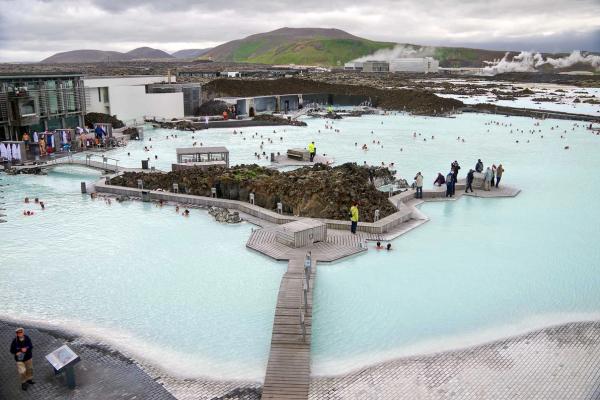
Bridge Between Continents (10 km)
Walk across this bridge spanning the rift between the North American and Eurasian plates. One of the few places on Earth where you can stand between continents.
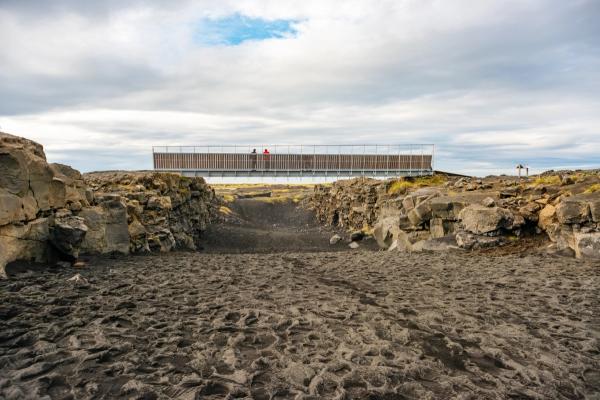
Fagradalsfjall Volcano (12 km)
This is the site of most of the last big eruptions from 2021-2024. Hiking trails lead to fresh lava fields and landscapes that keep changing due to volcanic activity. Check SafeTravel Iceland to make sure the conditions are okay to visit.
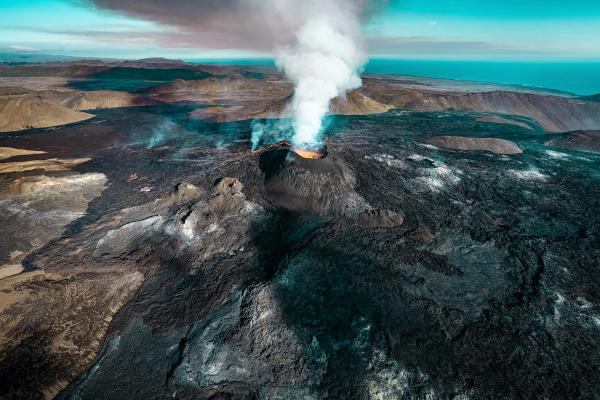
Seltún Geothermal Area (20 km)
A quieter alternative to Gunnuhver with colorful hot springs and steaming vents. There’s a free boardwalk access that makes it easy to explore safely.
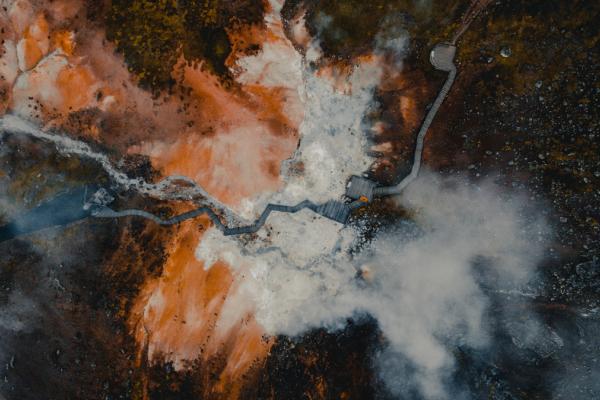
Viking World Museum (25 km)
In Njarðvík, this museum shows Iceland's Viking heritage. You can see a replica of the 9th-century Gokstad ship, and interactive exhibits tell the story of Norse exploration to North America.
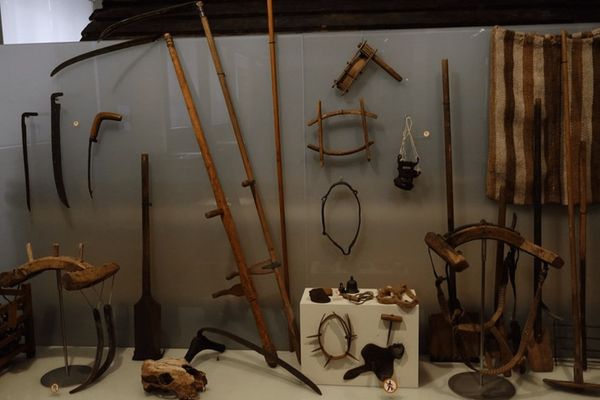
Conclusion
Reykjanesviti Lighthouse gives you way more than just a photo op. It opens the door to Iceland's geological drama, maritime history, and raw natural beauty. Maybe you want to hear the lighthouse's century-old story. Maybe you're excited about the geothermal wonders nearby. Or maybe you just want to stand at the edge of two continents. Either way, this corner of Iceland won't disappoint.

